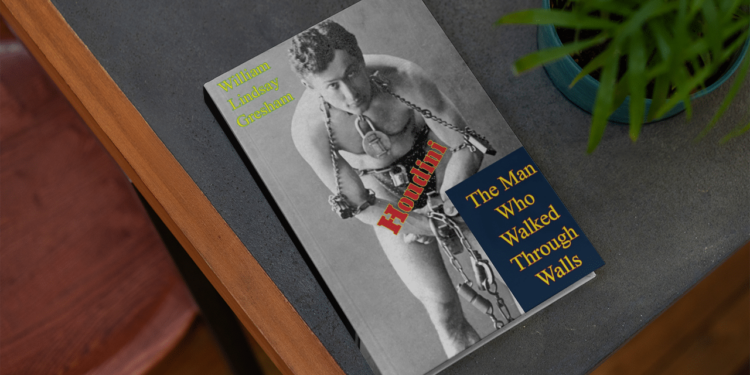William Lindsay Gresham, a remarkable writer whose life remains shrouded in mystery, left an indelible mark on the world of literature, cinema, and media. Born on August 20, 1909, in Baltimore, Maryland, Gresham’s life journey was a rollercoaster ride filled with triumphs, tragedies, and a constant battle between light and darkness. Despite his tumultuous life, Gresham’s contributions to the world of arts continue to captivate audiences to this day.
Early life and background of William Lindsay Gresham
Gresham’s early life was marked by a childhood steeped in poverty. Born into a family struggling to make ends meet, Gresham often found solace in books, using them as a means to escape the harsh reality of his surroundings. This early exposure to literature sparked a flame within him, igniting a lifelong passion for storytelling.
As Gresham grew older, his love for literature intensified. He devoured every book he could get his hands on, immersing himself in works that explored the darker aspects of human nature. These early influences would go on to shape his future writing style, characterized by a unique blend of noir, mystery, and psychological depth.
William Lindsay Gresham’s impact on cinema and media
Gresham’s impact on cinema and media cannot be overstated. His most famous work, “Nightmare Alley,” published in 1946, is a haunting and gritty tale of the dark underbelly of show business. The novel’s exploration of the human psyche and its unflinching portrayal of the lengths people will go to achieve success resonated deeply with audiences and filmmakers alike.
In 1947, “Nightmare Alley” was adapted into a film directed by Edmund Goulding, starring Tyrone Power and Joan Blondell. Despite mixed reviews upon its release, the film has since gained a cult following and is considered a classic in the film noir genre. Gresham’s influence on the film industry extended beyond this adaptation, as his works continue to inspire filmmakers to this day.
The enduring legacy of William Lindsay Gresham
Although Gresham is no longer alive, his legacy lives on through his works. His ability to delve into the darkest corners of the human psyche and explore the complex nature of good and evil continues to captivate readers and viewers alike. Gresham’s stories have a timeless quality, as they touch upon universal themes that resonate with audiences across generations.
Gresham’s impact extends beyond the realm of literature and cinema. His works have influenced countless artists, writers, and filmmakers, shaping the very fabric of popular culture. From his exploration of the human condition to his nuanced characterizations, Gresham’s legacy stands as a testament to the enduring power of storytelling.
Intriguing tidbits about William Lindsay Gresham’s life
Gresham’s life was filled with intriguing tidbits that offer a glimpse into the enigmatic nature of the man behind the words. Contrary to popular belief, Gresham did not lead a life of luxury despite his success as a writer. He often struggled financially, experiencing periods of both prosperity and destitution throughout his career.
Gresham’s love life was equally tumultuous. His first marriage to poet and novelist Joy Davidman ended in divorce, and he later married actress Georgette Bennett. Their relationship, too, was fraught with difficulties, ultimately leading to separation. Gresham’s complicated love life served as a source of inspiration for his works, adding depth and complexity to his characters’ relationships.
William Lindsay Gresham’s love life and friendships
In addition to his romantic relationships, Gresham developed meaningful friendships throughout his life. One of his closest friends was the renowned writer and critic, H.L. Mencken. The two shared a deep connection and often engaged in spirited discussions about literature and philosophy. Gresham’s friendships provided him with solace and support during the challenging periods of his life.
Exploring the works of William Lindsay Gresham – a list of his best books
William Lindsay Gresham’s body of work is a testament to his literary prowess. Here is a list of his five best books:
- “Nightmare Alley” (1946): A dark and gripping exploration of the human psyche set in the world of carnival sideshows.
- “Nightmare Alley: The Lost Chapter” (2005): This posthumously published chapter offers a deeper insight into the story of “Nightmare Alley.”
- “Limbo Tower” (1949): A psychological thriller that delves into the twisted minds of its characters.
- “The Lonely One” (1957): A haunting tale of obsession and isolation.
- “Monster Midway” (1953): Gresham’s collection of short stories showcases his mastery of the noir genre.
Notable quotes from William Lindsay Gresham’s works
Gresham’s writing is known for its powerful and thought-provoking quotes. Here are some notable quotes from his works:
- “In life, as in the carnival, everyone is playing a game. You either play or get played.”
- “Darkness is not the absence of light; it is the presence of hidden truths.”
- “The greatest illusion is the one we create within ourselves.”
- “In the depths of despair, true strength is born.”
- “We are all monsters in our own way; the only difference is how well we hide it.”
Setting the stage – main locations in William Lindsay Gresham’s books
Gresham’s books are often set in distinctive locations that serve as integral components of the narrative. Here are some of the main places where Gresham’s books are set:
- The seedy underbelly of carnival sideshows in “Nightmare Alley.”
- The eerie and desolate Limbo Tower in “Limbo Tower.”
- The isolated and haunting town of “The Lonely One.”
- The twisted world of a traveling carnival in “Monster Midway.”
The first and last books by William Lindsay Gresham
Gresham’s first published book, “Nightmare Alley,” catapulted him into the literary spotlight. Its success paved the way for his subsequent works and established his reputation as a master of psychological suspense.
Tragically, Gresham’s final book, “The Lonely One,” was published posthumously in 1957. The novel, a haunting exploration of the human psyche, serves as a fitting conclusion to Gresham’s body of work.
The screen adaptation of Nightmare Alley
In 1947, “Nightmare Alley” was adapted into a film directed by Edmund Goulding. Starring Tyrone Power and Joan Blondell, the film received mixed reviews upon its release. Despite this initial reception, the film has since garnered a cult following and is considered a classic in the film noir genre.
Artists who inspired William Lindsay Gresham
Gresham drew inspiration from various artists and writers throughout his life. One of his biggest influences was Edgar Allan Poe, whose macabre tales left a lasting impression on Gresham’s writing style. He also found inspiration in the works of Fyodor Dostoevsky and Franz Kafka, appreciating their exploration of the human condition.
Recommended reading – other writers and books for fans of William Lindsay Gresham
If you enjoyed William Lindsay Gresham’s works, here are five other writers and books you should explore:
- “The Glass Key” by Dashiell Hammett: A hard-boiled detective novel that delves into the dark side of politics and corruption.
- “The Shadow of the Wind” by Carlos Ruiz Zafón: A gothic tale set in post-war Barcelona, exploring the power of storytelling.
- “In Cold Blood” by Truman Capote: A chilling true crime masterpiece that blurs the lines between journalism and literature.
- “The Secret History” by Donna Tartt: A gripping novel that delves into the dark secrets of an elite group of students.
- “The Talented Mr. Ripley” by Patricia Highsmith: A psychological thriller that explores themes of identity, obsession, and manipulation.
A buying guide for William Lindsay Gresham’s books
If you’re eager to dive into William Lindsay Gresham’s captivating works, here’s a buying guide to help you get started:
- “Nightmare Alley” (1946): The novel that launched Gresham’s career and remains a must-read for fans of psychological suspense.
- “Limbo Tower” (1949): A gripping thriller that showcases Gresham’s skill at crafting complex characters and atmospheric settings.
- “The Lonely One” (1957): Gresham’s final novel, a haunting exploration of the human psyche that serves as a fitting end to his body of work.
- “Monster Midway” (1953): A collection of short stories that highlight Gresham’s narrative prowess and his ability to transport readers into the dark recesses of the human mind.
Conclusion
William Lindsay Gresham’s enigmatic life and enduring impact on cinema and media make him a fascinating figure in the world of arts. From his humble beginnings to his literary triumphs, Gresham’s storytelling continues to captivate audiences with its exploration of the human psyche and its unflinching portrayal of the human condition. His legacy lives on through his works, inspiring generations of writers, filmmakers, and artists. Dive into Gresham’s captivating world and discover the timeless power of his storytelling.









